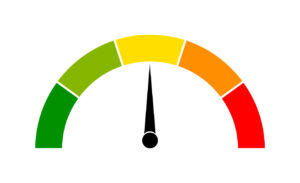Curating the week in wellness February 18th –20th 2021: The rise of wellness apps; supporting colleagues of color, and more
The week’s essential content and fresh industry pickings for those dedicated to employee well-being.

Greetings, wellness pros, HR heroes and comms champions!
We hope you enjoy and benefit from this week’s batch of links.
As always, please get in touch with any ideas, suggestions or feedback on how we can serve you better. We are grateful for your partnership and for all the excellent work you do.
1. The rise of the wellness app.
The New York Times has published a robust article about the proliferation of well-being tech, gadgets and gizmos that are reshaping the modern workplace. Wellness apps can be a great help, of course, but the piece warns of over-reliance on tech in lieu of providing more substantive, meaningful and relevant benefits for employees. The article warns of the deeper problems caused by “the alienation of 21st century work:”
“Employees who participate in corporate wellness programs do report more job satisfaction and higher levels of happiness, but there’s as much, if not more, research that suggests that our fixation on our smartphones contributes to headaches, bad posture, fatigue, depression and anxiety. Wellness, the way our culture chooses to define it, has become synonymous with productivity and self-optimization. But wellness isn’t something that can be downloaded and consumed, even if the constellations of sun-drenched photos on your Instagram feed indicate otherwise.”
2. Celebrating Black history—and supporting colleagues of color.
Is your company “done” with Black History Month already? Keep the positive momentum with mental health support for women of color, nine wellness-focused books and podcasts, and learning from 12 organizations that are supporting Black women’s emotional health.
Also, take time to wrangle with ideas that could shrink the racial wealth gap, help Black employees thrive, and glean insights from groundbreaking wellness advocates and activists.
3. Is the Biden administration intent on killing wellness programs?
The folks at Insurance Thought Leadership seem to think so. The author, Al Lewis, writes that “Advisers need to be aware that many if not most clinical wellness programs now expose clients to employee EEOC actions,” and that, “Most clinical wellness programs now technically violate the Americans with Disabilities Act.”
He explains: “You can still offer activity-based programs and still tie up to 30% of insurance dollars to those programs. The reason? Activity-based programs are governed by the Affordable Care Act (ACA) only, not the ADA. They include physical and mental activities, as well as seminars, quizzes, volunteer work and more. The difference between the two program types is best illustrated by an example: You can make employees wear FitBits to track their steps, but you can’t track their pulses.”
You can read more thoughts from a wellness skeptic—and perhaps augment your offerings accordingly—here.
4. Caring for caregivers.
The pandemic has thrust many of us into new roles, at home and at work. Odds are, someone in your midst is now caring for someone who’s either elderly, chronically ill, disabled or in need of help with virtual school. These harried workers deserve every bit of compassion, empathy and support you can muster—but what might that look like?
Prudential is partnering with Wellthy to help its caregiving employees maintain a bit of financial and mental wellness:
“The new partnership will enable Prudential to offer no-cost access to Wellthy’s digital caregiving tools, such as educational content, digital care plan creation, storage of digital caregiving documents (e.g., prescriptions, medical records, wills, etc.), access to a shared calendar to track appointments, and the ability to establish a group caregiving discussion.”
Anything you can do to alleviate caregivers’ burdens will be much appreciated.
5. Spicing up those virtual offerings.
Chipotle is expanding the spread of virtual benefits available to its employees. “Through online educational opportunities, employee resource groups, and its Culture Committee, Chipotle is providing a purposeful remote work experience for its employees,” a press release states, noting that the company “has increased visibility into Chipotle’s best in class mental health and fitness benefits, including access to HealthAdvocate and a library of digital workout videos and live or on-demand online workout sessions.”
No word on whether guac is now free of charge.
6. HR’s time to shine—for good.
New Mercer research reveals that “60% of U.S. HR leaders say their companies have ‘continued or stepped up the pace’ toward a business approach that takes into account environmental, social and governance, or ESG, metrics. To that end, U.S. companies are expected to invest more in analytics and insights for areas including diversity, equity and inclusion.”
Meanwhile, HR Dive reports that HR pros’ top 2021 priority is to be a “strategic adviser” to leadership. Wellness and comms pros might be wise to follow suit.
7. Bolstering employees’ financial wellness.
Employee Benefit News shares how Noodles & Co., PwC, and Goodly are helping employees shore up their finances during this tumultuous season, as well as hard data behind the efficacy of EAPs.
8. Helping your colleagues find purpose.
HRD offers guidance for tapping into a profound desire we all share to be part of something bigger and more substantial than ourselves. As the piece states, “At the end of the day, while rewards and benefits are important, employees today are really looking for the meaning and impact behind their work.”
To start building a wellness program that tackles life’s biggest concerns, consider these common end-of-life regrets:
- “I wish I’d had the courage to live a life true to myself, not the life others expected of me.
- “I wish I hadn’t worked so hard.”
- “I wish I’d had the courage to express my feelings.”
- “I wish I had stayed in touch with my friends.”
- “I wish that I had let myself be happier.”
9. Engaging—and retaining—Gen Z workers.
Forbes shares 14 ways to brace for Gen Z’s already-profound impact on the workplace. The piece says to clarify how individual contributions impact the overall mission, be ready to answer tough question that challenge the norm, and to bring them into a diverse a team as possible.
On the note of fostering diversity, CIO offers five crucial tips on retaining diverse hires.







